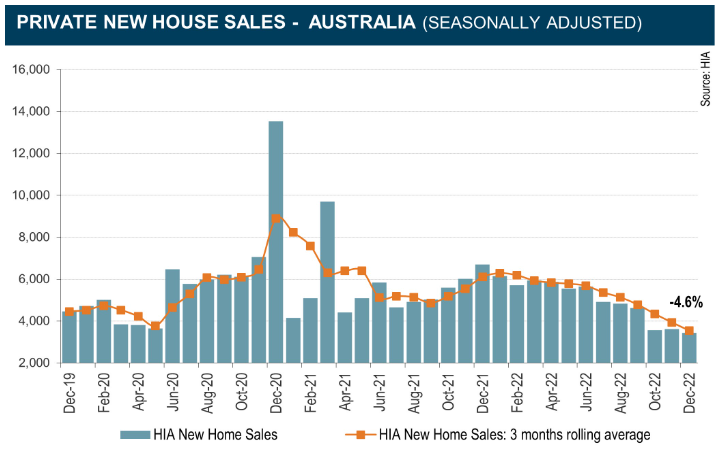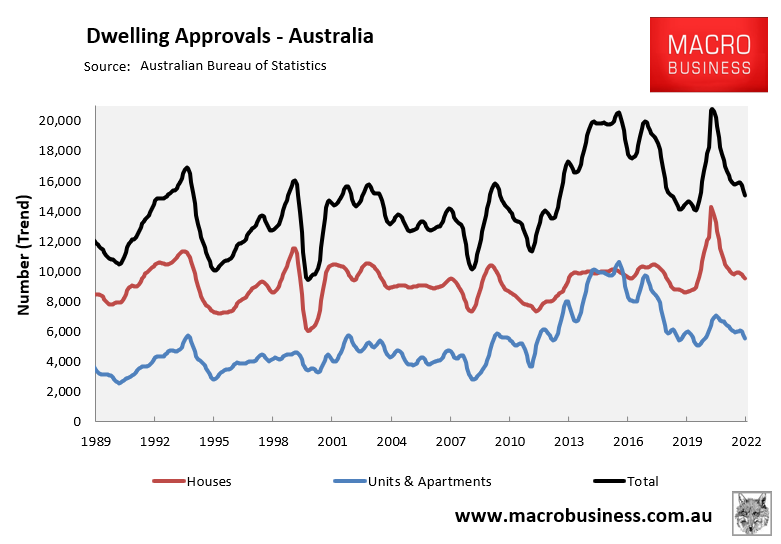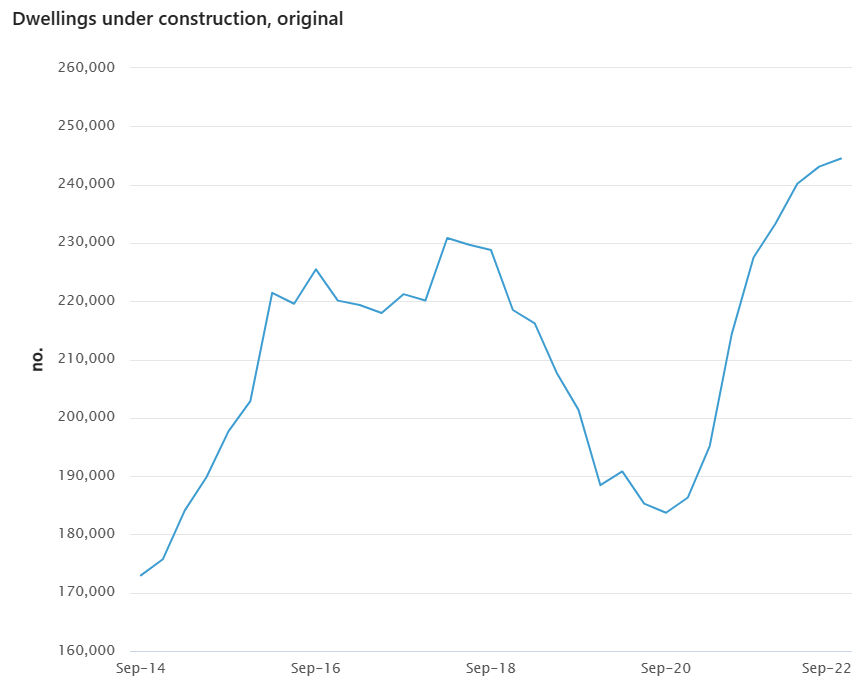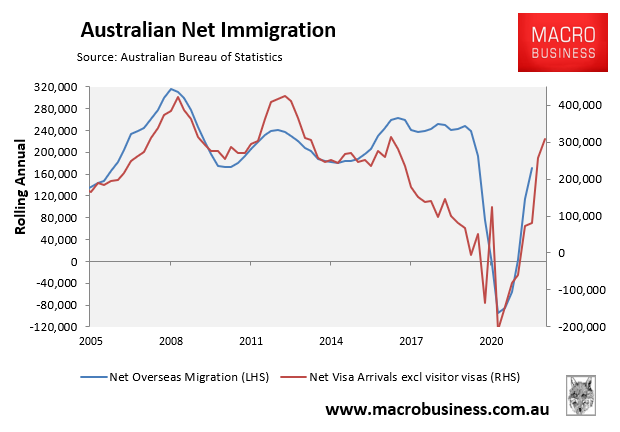The Housing Industry Association (HIA) has released new home sales data for December, which “continue to decline sharply following the fastest increase in the cash rate in a generation”:

New home sales collapsing.
“Sales of new homes fell by 4.6% in December”, according to the HIA, “leaving sales in the final quarter of 2022 a remarkable 42.0% lower than at the same time in 2021”.
The HIA warned that the slowing in new home sales “will flow through to a slowdown in building activity in the second half of 2023”.
Specifically, the aggressive rate hikes from the Reserve Bank of Australia (RBA) has “seen many recent buyers of new homes unable to finance their new project”, according to the HIA, with “one in five recent new home buyers having to cancel their new home building contract as their access to finance was reduced by the rise in the cash rate”.
The sharp decline in new home sales follows a similarly sharp fall in dwelling approvals:

Australian dwelling approvals fell sharply in 2022.
However, because of the major delays in home construction following the HomeBuilder stimulus, the pipeline of homes under construction hit a record high in the September quarter of 2022, according to the ABS:

Record high number of dwellings under construction in Q3 2022.
But this situation will quickly change in the second half, according to the HIA.
“Once this pipeline of new home construction work is exhausted, the full impact of the RBA’s rate increases will become apparent. This is expected to occur in the second half of 2023″.
Accordingly, the HIA believes “a cut to the cash rate will be necessary in 2023 to avoid an unnecessarily sharp downturn in building activity”.
“The RBA will not restore the economy to stable growth by putting the housing industry through boom-and-bust cycles”.
The prospect of falling dwelling construction is worrying given the Albanese Government has committed to the biggest temporary and permanent migration program in this nation’s history, which has already seen annual immigration return to its manic pre-pandemic level:

Australian facing record immigration in 2023.
The only outcome will be an even tighter rental market, stronger rental inflation, and increased housing stress and homelessness.
The Albanese Government’s mass immigration ‘Big Australia’ policy is an inequality disaster in the making.

